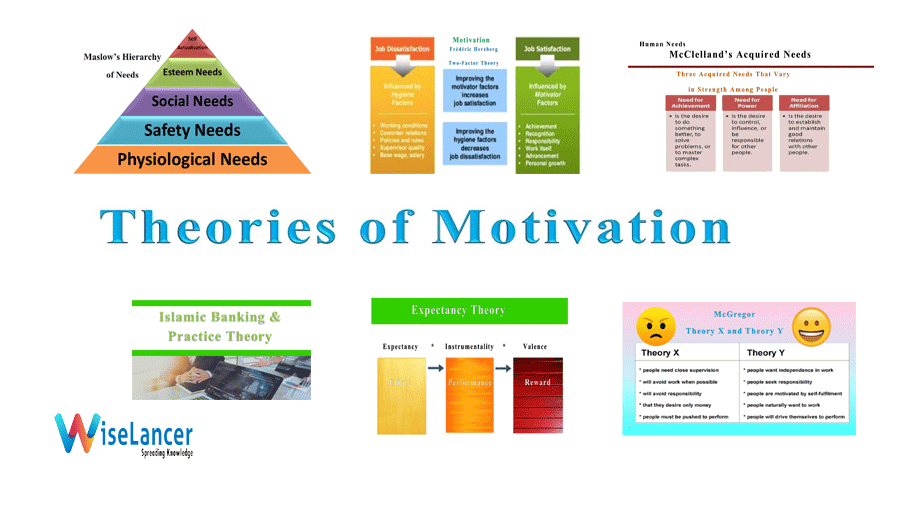Two-Factor Theory by Frédéric Herzberg (1965)
Theories of Motivation

Frederick Herzberg’s two-factor theory (1965) – or theory of 2 motivational factors – states that the motivation of an individual is primarily based upon optimal satisfaction induced by 2 factors:
· Motor factors – internal or psychological: specific to each person; these factors refer to personal development and are considered to be a source of motivation in case the person does not experience any dissatisfaction at the same time.
· Hygiene factors – external or physiological: specific to all human beings, they refer in particular to the work environments. This factor can influence dissatisfaction. The absence or disappearance of this factor will not be able to generate motivation alone.
According to this eminent American psychologist in the 1950s, also a management professor, satisfaction and dissatisfaction are neither linked nor opposed. Each of these feelings acts completely independently. This theory, sometimes heavily criticized, emphasizes the complexity associated with human nature, especially regarding motivation (Scheuer, 2000).
Implementing the Herzberg theory in the banking sector, hygiene factors create job satisfaction, not motivation. However, when motivators are placed, they can develop motivation, resulting in improved and higher job performance. For example, the provision of hygienic conditions in the workplace will not improve the employee’s motivation level to perform well. However, satisfactory working conditions will make employees continue their job. As a result, hygienic conditions will not have any affect on the performance of the employees. However, on the other side, if the employer is praised or rewarded for their hard work, they will be eager to do more, thereby resulting in increased job performance.
For this theory, critics state that there is much emphasis on job enrichment, whereas job satisfaction has been completely ignored. Only a little importance has been given to the employees’ pay scale, status and interpersonal relationships, which are considered to be general motivators of the employees (Patah et al., 2009).
The Two Factor Theory operates a split between the factors that allow avoiding dissatisfaction and those that allow generating satisfaction. As per the Herzberg theory, factors of satisfaction are of no use if those factors which tend to prevent dissatisfaction are not in place. This aspect is clearly visible in Work and Nature of Man.
To be concrete, the first level needs to be reached in order not to cause any discontent.
To do this, we must avoid heat, noise, lack of hygiene and cleanliness, human tensions, lack of dialogue or communication between managers and employees, and job insecurity.
When this first level has been reached, avoiding dissatisfaction is no longer enough, but the aim should be to promote satisfaction.
It is now very important to develop and implement those factors that foster motivation and rewards: autonomy, career development, empowerment, encouragement, promotions, and even recognition.
Herzberg’s bi-factor theory of motivation is primarily based upon an important prerequisite: the person at work seeks, first of all, to suffer as minimally as possible: after this, he will seek to reduce fatigue or stress to the maximum possible level. The manager must then put in place so-called favorable “hygienic” conditions in the organization to avoid employee dissatisfaction (Christopher, 2005).
As has been presented in the pyramid of Maslow, an individual seeks in work a means of accomplishment and fulfillment.
The manager should therefore find ways to stimulate employees while also respecting them as human beings. Such an act can be a complex phenomenon for implementation as it is not merely a question of avoiding dissatisfaction but of setting up conditions favorable to satisfaction.
It is to be used, for example, for industrial-type companies which encounter difficulties in terms of the social climate or for companies whose working environment could be more satisfactory. It is, therefore, crucial to show that everything must first be done to avoid dissatisfaction before seeking to promote motivation. A policy of redeveloping the premises of an industrial company can be a first approach to limit and even eliminate job dissatisfaction. Subsequently, other, more traditional measures must be implemented to allow motivation. It is up to you, thereafter, to propose means to allow an improvement in job satisfaction (Dries, Pepermans and Carlier, 2008).
The theory serves as a guideline for managers in structuring employment opportunities to include certain factors within jobs that automatically insert in the satisfaction factor.
